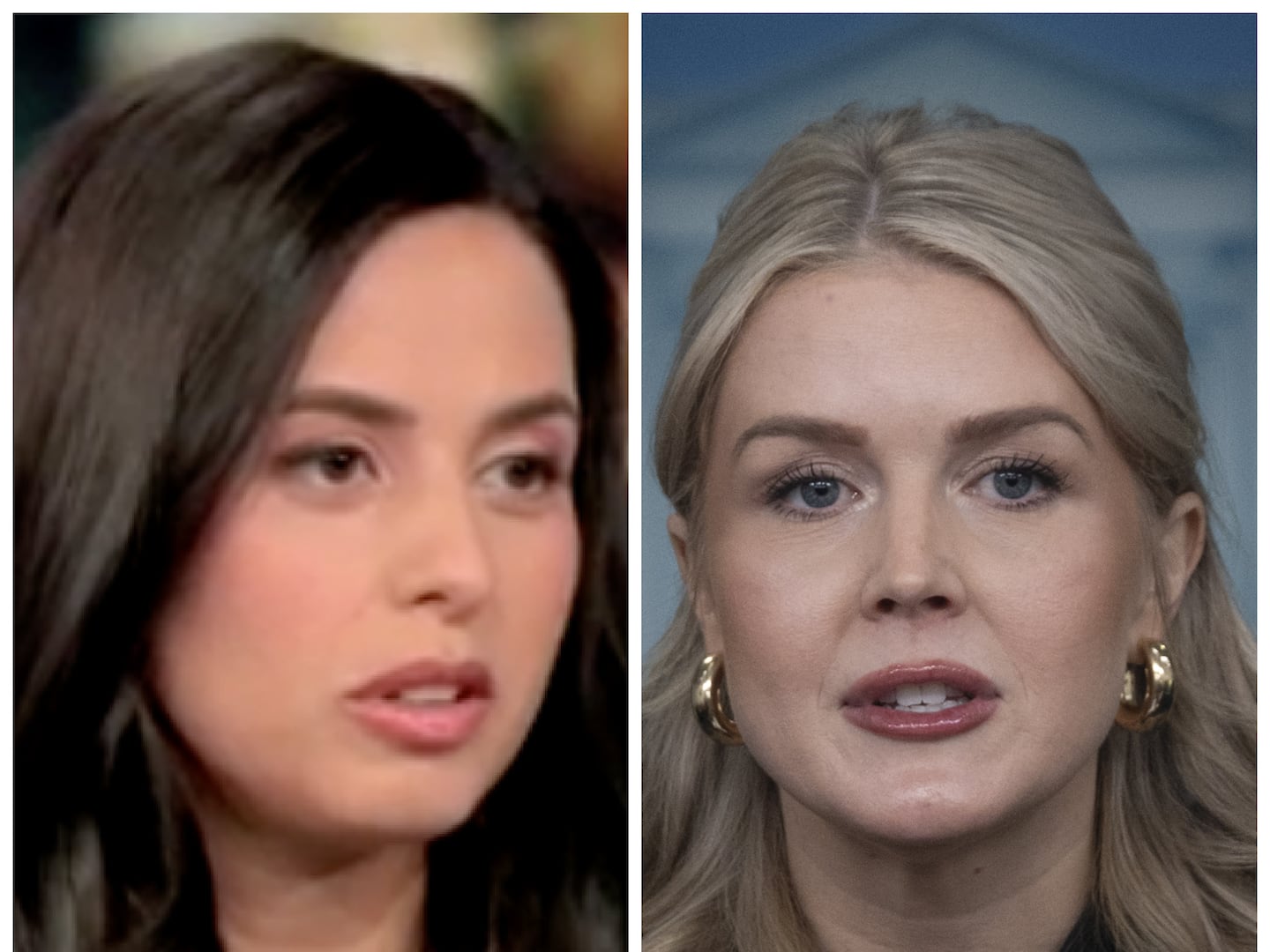Just give Whoopi Goldberg her own show. Isn’t that the best, short-term solution? The sole survivor of The View massacre, or The Night of the Long Nails as you might call it, Goldberg for now at least sits alone at the show’s centerpiece semi-oval table after the firing of Sherri Shepherd and Jenny McCarthy.

There has been very little mourning of this dual scalping, just a sense of inevitability. A show that once proudly sailed has been listing for some time: It really lost its coordinates when Joy Behar left the show last year, and—as widely disliked as she was—the simultaneous departure of right-wing viewer-bait Elisabeth Hasselbeck was a wounding puncture.
At least, while Hasselbeck was there, viewers had a figure they could collectively growl at. With or without her, the show had long mutated into a confected, loud shouting match, its hosts talking over one another about issues less of importance to “women,” and more of interest to the tabloids. It was drenched in eau de parfum Kardashian.
Goldberg probably hates the idea of staying there, solitary at the controls, for too long. On The View, while she leads the show, she sat apart from the more hysterical caterwauling and general idiocy around her. To date, she hasn’t clunked into embarrassing brouhahas around (Shepherd) thinking the Earth is flat, or (McCarthy) anti-vaccine crusading, and electronic cigarette smoking. Goldberg has charisma, intelligence, and she doesn’t appear to suffer fools—gladly or otherwise, which again makes her endurance at The View that much more impressive.
In the whispering around who Goldberg’s new co-hosts will be, a bigger question is being overlooked: Should The View survive anyway? The reason to watch The View is the same as watching Real Housewives: We want to watch argument, tempers flaring. The most memorable View moments are not searing discussions about equal pay or access to abortion, but when Rosie O’Donnell and Elisabeth Hasselbeck argued over Iraq, or when Joy Behar and Whoopi Goldberg walked off-set signaling their disapproval of Bill O’Reilly.
The View has to outrage, stir things up to secure the kinds of publicity its own celebrities court.
Its ratings are far from tanking, but what kind of show does ABC, and its viewers want? The View was original when it began in the late 1990s, but now it is much-copied. CBS has The Talk, and in the autumn a new, syndicated female panel show called The Real will premiere, following an apparently successful tryout earlier this year.
As every model of all-female chat-shows emulates the other, the successful formula is celebrity news (with a “female” angle), tabloid news story (with a “female” angle), and the word “female” in this context means a woman going through romantic troubles, abusive issues, a woman who may have said something which reflects on other women; an endless surfing over stereotypical female concerns and preoccupations, peppered with gossip and coated with a gloopy layer of empowerment, which means sentences end with declarations like “as all moms know…” or “as women,” or “as moms,” and yet the women intoning this aren’t necessarily ones to identify with or emulate. It’s no great accident of alchemy that the most successful View presenter, after Walters, has been Meredith Vieira, who is intelligent, warm, and talks levelly to her viewers.
“The View will be moving in an exciting new direction next season and ABC has made decisions to evolve the show creatively,” an ABC statement read, in the wake of the news about Shepherd and McCarthy’s departures. That “new direction” is the great mystery. Look back to the first episode of The View, and it’s sedate and polite as you’d expect a show of first introductions to be. The set at that time was weird mix of softly furnished Middle American living room and Manhattan penthouse, and the tone was squarely aimed at housewives: Barbara Walters said that the show was intended to be “funny, serious, and informative,” its hosts “getting together” like its viewers did or desired to do to talk about “anything and everything.” And they have: When the panel was Walters, Goldberg, Behar, and Shepherd, there were measured, disagreement-peppered debates about transgender kids for example. But the irony of a crowded marketplace, one where you’re so good you spawn imitators like The Talk, is that you need to ratchet up the shocks and the tabloid shock value to stay relevant yourselves. The tone of desperation rises.
The View is not pioneering feminist television, it is full of tabloid tittle-tattle, and celebrities and authors selling product, alongside sponsored segments with exactly the same aim. It is, at least now, no different from any other chat show, except it is louder than an air show. Its hosts are more rounded than the format of that semi-oval table allows: A network daytime show has its own conservatism, and—focus-grouped to hell—every host has a role to play whether it be “working mom,” or “single vixen.” Every box is another restriction, a narrowing of the hosts’ intelligence, and our own at home.
So here’s a radical idea: If The View does have a future, if it keeps the same roundtable format, then why not wise-up, rather than dumb-down. Why not make the most radical virtue of four very different women—even, maybe a man—sitting at a table? Why not feature topics not solely defined by a corollary to “women”? Evolve a revolving roundtable of women, or men, with diverse, unpredictable views. Impose a Kardashian ban. Every day have a segment called “What would Andrea Dworkin say?”
OK, that last one is my own private desire, unlikely to be met, but imagine a morning show with brains. That would get ABC talked about. It would also electrify a talked-down-to audience. We’d “take a little time to enjoy the view” at the end of every episode if our heads weren’t in our hands.






